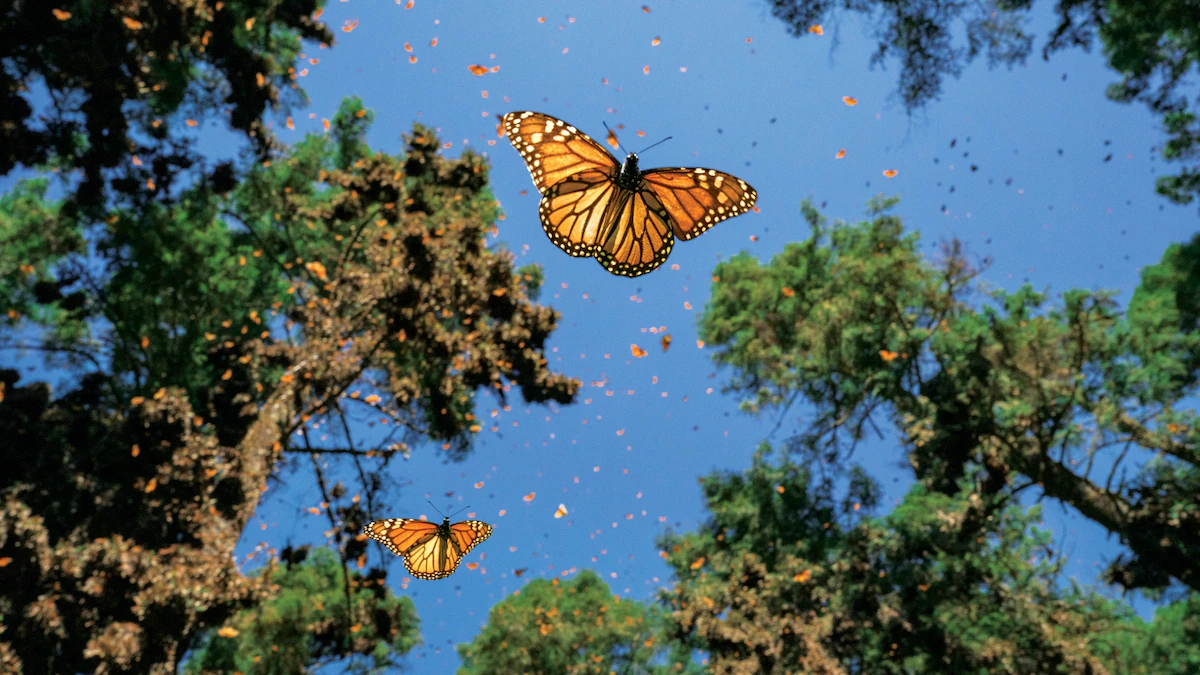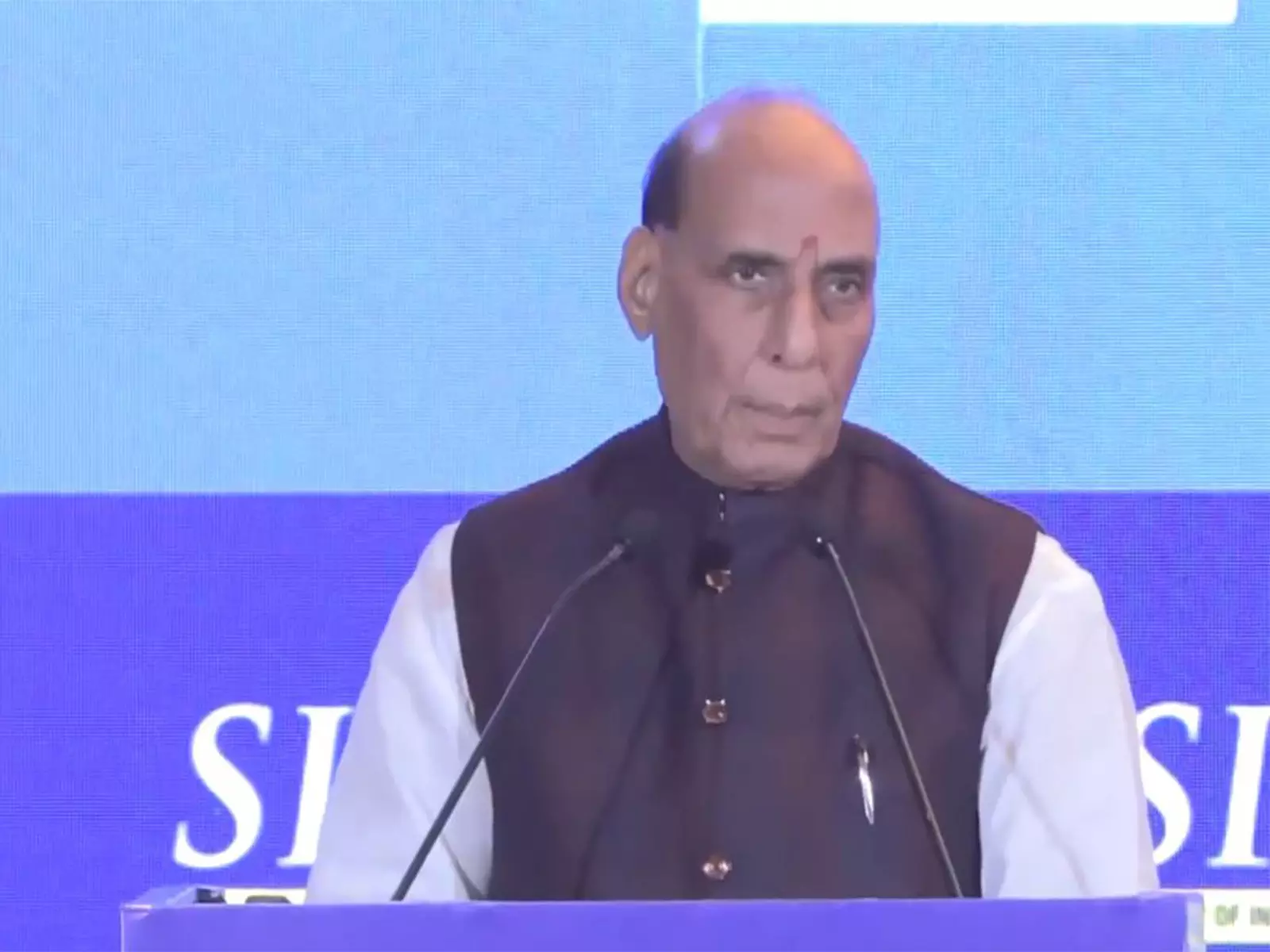Copyright National Geographic

The flapping wings of millions of monarch butterflies at the Monarch Butterfly Biosphere Reserve in Michoacán, Mexico, create a fluttering sound that Alfonso Alonso describes as “magical.” The butterflies migrate from the northern United States and southern Canada each year just in time for Día de los Muertos on November 1 and 2, when celebrations in many parts of Mexico honor deceased ancestors. The serendipitous timing may have led to the belief that a monarch butterfly who visits you represents the soul of a departed loved one. “For the local culture, it is like the souls of their people that have passed away are coming back to reunite with them,” says Alonso, a conservation biologist with the Smithsonian’s National Zoo and Conservation Biology Institute, who’s been studying monarch butterflies for about 30 years. The orange wings also resemble the color of the cempasúchil flower, commonly used at altars and funerals in Michoacán. “[The reserve is] a spiritual experience.” But a new study, published recently in Acta Oecologica, suggests that this annual overwintering monarch “hotspot,” which is also a UNESCO World Heritage site, could be threatened by a staple of Mexican cuisine and American brunches: the ever-popular avocado. “The expansion of avocado is a new threat that wasn't there 20 years ago,” says study co-author Diego R. Pérez Salicrup, an ecologist at the Universidad Nacional Autónoma de México who has studied the monarch populations at the reserve for 15 years. Mexico exports more than 2.4 billion pounds of avocados to the U.S. each year, and nearly 90 percent are from the region around the biosphere. “It’s imposing a new pressure on the monarchs.” A butterfly ‘hotspot’ at risk LIMITED TIME OFFER Millions of butterflies settle in the sacred fir trees, 10,000 feet above sea level, at the reserve each autumn. Heading downhill, conifer and pine-oak forests separate the biosphere reserve from the avocado plantations below. The study looked at avocado expansion between 2006 and 2024 and modeled what future avocado production might look like based on different climate models. The findings suggest that by 2050, one-third of cultivable areas in the lowlands outside the biosphere reserve will no longer be suitable for avocado production, likely pushing avocado crops to higher elevations. “Avocado production depends on pollinators,” says study co-author Eduardo Sáenz, an environmental scientist at the Universidad Nacional Autónoma de México who has been studying the butterflies for 15 years. “So it's very contradictory how the avocado production is threatening local pollinators, including monarch butterflies.” The location of the butterfly migration “hotspot”—80 miles west of Mexico City, in forested mountains—was discovered only 50 years ago. The Monarch Butterfly Biosphere Reserve commemorates its 25th anniversary this year; it got its name in 2000 when the Mexican government expanded its protected area to more than 138,000 acres. The lowest level of forest, the pine-oak forest, is currently “directly impacted” by avocado expansion, Sáenz says. But the study authors also mapped out different climate change scenarios, and both forecasted avocado production encroaching upon the protected butterfly territory in the mountains. “In the worst-case scenario, warmer climates are going to reach higher elevations faster, and that's going to be easier for potential producers to turn those forests into avocado plantations,” Pérez Salicrup says. In that scenario, the microclimate of the forest would become a more tolerable condition for an avocado orchard. “Suitable areas for avocado production will reach current elevations where monarch butterfly colonies are,” says Sáenz, who has a deeply personal relationship with the biosphere. His father was a forest engineer who would bring Sáenz to the biosphere when he was a child. “Literally, I used to play with my toys under monarchs flying around,” he says. Green gold While the core of the Monarch Butterfly Biosphere Reserve is protected, including the buffer zone to a lesser extent, the fringes are not—and enforcement can sometimes be iffy, especially with the advent of cartels dipping into "green gold." A 2025 paper notes that organized crime units that relied on heroin for income lost money after fentanyl came onto the scene in 2014; many of those cartels diversified, including “extortion and theft in licit industries, such as the avocado sector.” In fact, the “expanding criminal networks” and violence in the region have been well-documented. Drug-related organizations “make so much money through illegal exportation of other items that they need to launder their money,” Pérez Salicrup says—and they turn to avocado production to do so. “Organized crime is very strong in the state of Michoacán, but fortunately [the core zone of] the biosphere reserve is not as affected,” Alonso says. The forests below are not as lucky. A report called “Unholy Guacamole” from Climate Rights International finds that almost all deforestation in Michoacán for avocado production in the past two decades has been illegal. Drug cartels and other crime groups have been involved in clearing forests and extorting money from existing avocado businesses. What’s more, notes Alonso, these forests are “not the right place to grow [avocados] because it's pretty high in elevation.” Should you stop eating avocados? Boycotting guacamole and avocado toast isn’t the best path forward. Scientists say that giving up avocados would do more harm than good for communities in Michoacán. “It’s not a solution to prohibit the avocado consumption in the United States, because it's the most profitable activity for Michoacán farmers,” Sáenz says. “There is a huge [monetary] difference between avocado and corn or traditional crops such as soybean.” That income allows avocado farmers to earn a good living, and they often put some of those funds back into conservation efforts that invest in the health of the Monarch Butterfly Biosphere Reserve. A community called Carpinteros began planting avocados more than 25 years ago and, using some of the income, paid for conservation brigades that patrolled for bark beetles, a major threat to pine forests, and wildfires, among other threats. “I think they were quite pioneers in that sense,” Pérez Salicrup says. “With that profit, they were able to pay for people…to take care of the forest.” Scientists also wish there were more appreciation for the Mexican government for its attempts to police deforestation as well as nongovernmental organizations that have made huge strides in conservation — Alternare, which has trained farmers in organic farming and reforestation techniques, and World Wildlife Fund Mexico, which has planted trees to restore forests and curbed illegal logging via monitoring with satellites. The study authors also point out that the survival of the monarch butterfly depends on more than the health of the reserve in Michoacán—the butterflies must survive summer in the U.S. and Canada first. Thirty years ago, 100 million butterflies migrated to Mexico from the north each year, Alonso says; now, there are only 20 million. The loss of milkweed is widely blamed for their decline. Alonso notes that the most important thing anyone can do, especially in the U.S., is plant milkweed native to where they live, which is crucial for the butterflies’ survival before migration: Milkweed is the only plant that monarch caterpillars can eat, and many die before they metamorphosize and migrate south. “I don't think it's fair to just portray avocado as the bad guy in the story,” Pérez Salicrup says. “I think that we need to recognize that it is us humans making decisions on the ecosystems we're trying to manage, and those decisions have to be taken responsibly.” Avocados are an undeniable part of Mexican culture, just like Día de los Muertos in many parts of the country. Pérez Salicrup believes that the holiday and its popularity in Michoacán, in particular, can be a boon for conservation and can help drive smart decisions. “If something is culturally important for you, you're going to keep it,” he says. “And people do associate the arrival of the monarch butterflies with Día de los Muertos, which is a strong tradition here in Mexico.” He believes it drives home a “very strong” message when speaking to communities and authorities about conservation efforts: “If you want the butterflies to keep on arriving during the Day of the Dead, then please, you have to do something to keep the forest,” Pérez Salicrup says. “Otherwise, they're going to stop arriving.”



